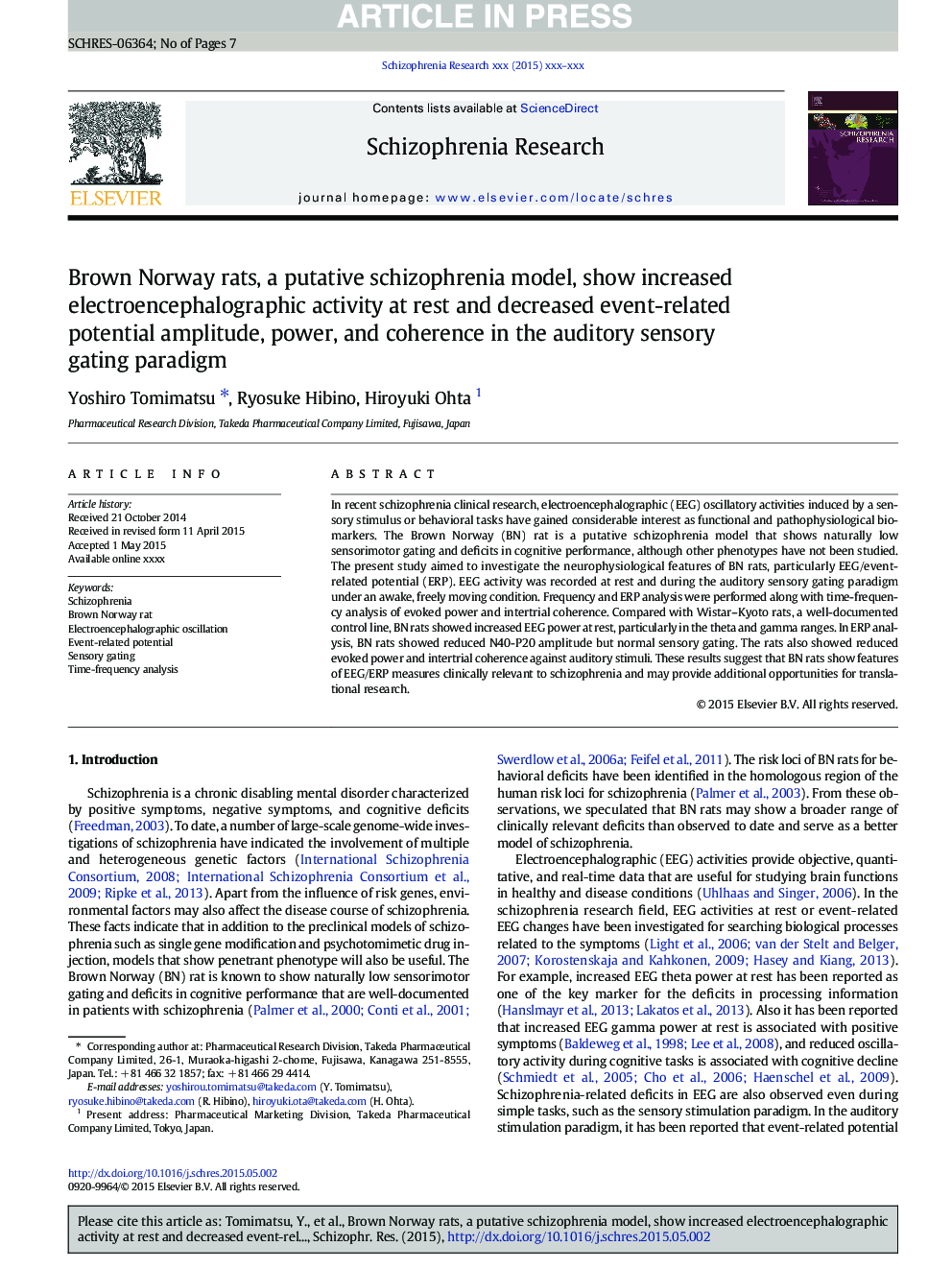| Article ID | Journal | Published Year | Pages | File Type |
|---|---|---|---|---|
| 6823824 | Schizophrenia Research | 2015 | 7 Pages |
Abstract
In recent schizophrenia clinical research, electroencephalographic (EEG) oscillatory activities induced by a sensory stimulus or behavioral tasks have gained considerable interest as functional and pathophysiological biomarkers. The Brown Norway (BN) rat is a putative schizophrenia model that shows naturally low sensorimotor gating and deficits in cognitive performance, although other phenotypes have not been studied. The present study aimed to investigate the neurophysiological features of BN rats, particularly EEG/event-related potential (ERP). EEG activity was recorded at rest and during the auditory sensory gating paradigm under an awake, freely moving condition. Frequency and ERP analysis were performed along with time-frequency analysis of evoked power and intertrial coherence. Compared with Wistar-Kyoto rats, a well-documented control line, BN rats showed increased EEG power at rest, particularly in the theta and gamma ranges. In ERP analysis, BN rats showed reduced N40-P20 amplitude but normal sensory gating. The rats also showed reduced evoked power and intertrial coherence against auditory stimuli. These results suggest that BN rats show features of EEG/ERP measures clinically relevant to schizophrenia and may provide additional opportunities for translational research.
Related Topics
Life Sciences
Neuroscience
Behavioral Neuroscience
Authors
Yoshiro Tomimatsu, Ryosuke Hibino, Hiroyuki Ohta,
